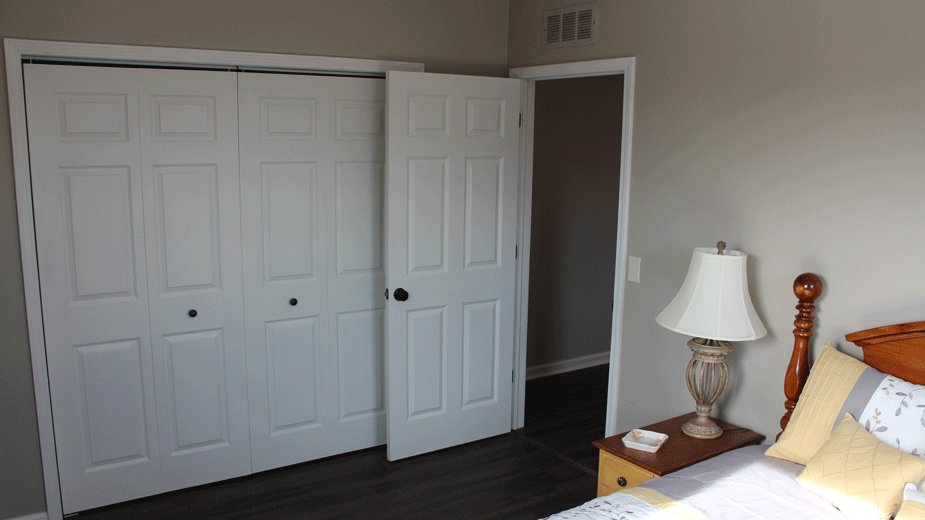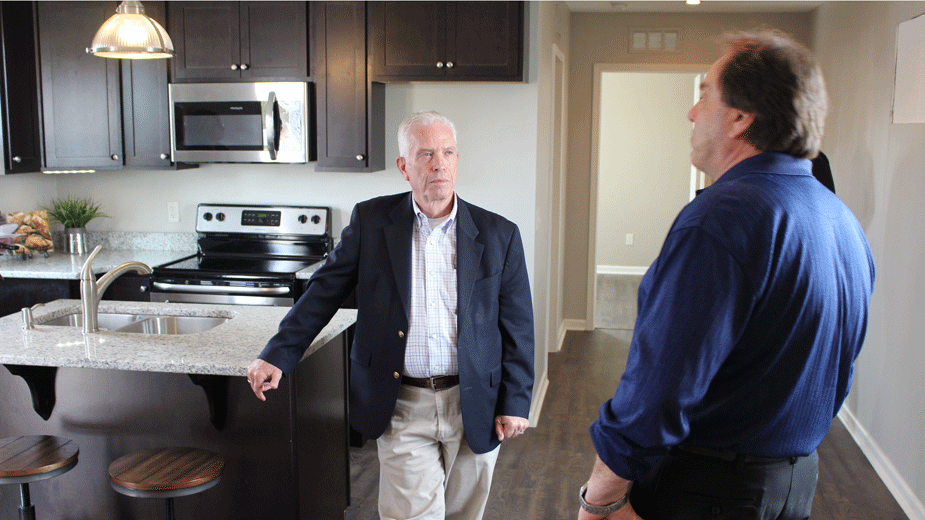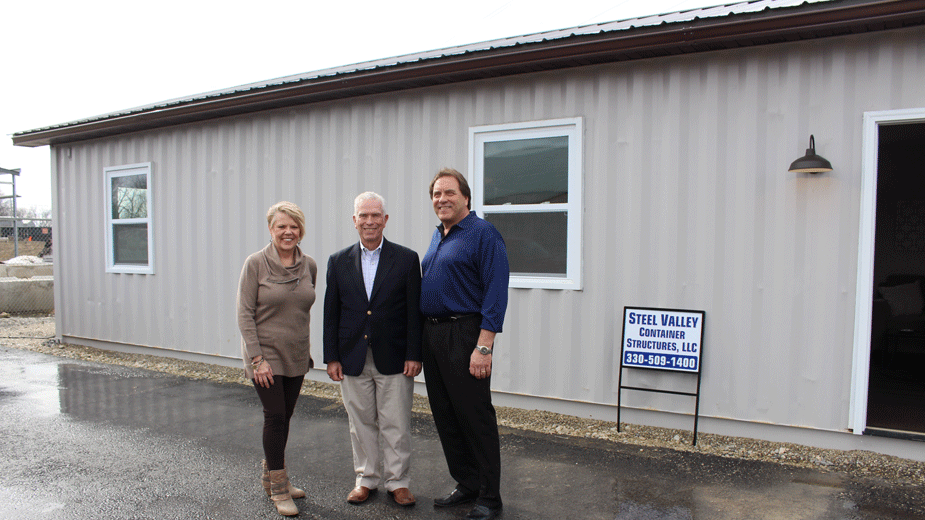North Lima Company Builds Shipping Container House
NORTH LIMA, Ohio – When Ed Macabobby Jr. first approached Eric Carlson with his concept of converting shipping containers into residential units, Carlson believed the idea was doable.
Still, Carlson was surprised by the result.
“Never did I imagine it would turn out as gorgeous as what this project turned out to be,” he remarked.
Carlson is president of Joe Dickey Electric, which performed the electrical work on the model housing unit Macabobby’s company, Steel Valley Container Structures LLC, built.
Macabobby showed off the model Tuesday at a media event with U.S. Rep. Bill Johnson.
“We put the windows in, put the doors in, and then it was totally done like a house,” Macabobby explained. The unit is wired for electrical service as well as cable television, insulated, features a full kitchen and bathroom, and has space for a stackable washer and dryer.
The initial unit – constructed from two shipping containers – is about 650 square feet, he said.
The project began because Macabobby wanted to diversify Aeriss Inc., his steel fabrication company. About three years ago he began researching the shipping container housing idea, which he saw being done in the United Kingdom and in U.S. cities like Detroit. With the demolition of blighted houses in Youngstown, he considered it as an option to provide a means of replenishing the housing stock.
Members of City Council, with whom he discussed using containers for housing and business incubation space on the city’s south side, had difficulty visualizing how the end product would look, and encouraged Macabobby to develop the model, he said.
“They can be arranged to do just about anything,” Macabobby said. “This can be adjusted any way you want.”
Separately, Macabobby’s company worked with local artist Tony Armeni to fabricate a downtown Youngstown bus shelter he designed using a shipping container as part of the federally funded InPlace project.
In Los Angeles, the units are being divided to serve as shelters for homeless people. At the other end of the economic spectrum, wealthy individuals hire architects and spend $600,000 to build “huge houses” out of the containers, he reported. “The possibilities are tremendous,” he continued.
The model was constructed over several weeks during off hours, he said. He estimated construction of each unit would take about a month to six weeks. The units could be set on a foundation, a full basement or concrete piers, he noted.
Macabobby worked with other local contractors and suppliers, including Dickey and Sheely’s Furniture and Appliance. He estimated the cost to construct and furnish the unit at under $100 per square foot.

Johnson, R-6 Ohio, said the unit was about the size of his first apartment after he first got married in 1975 – and its bathroom is bigger than the one in his current residence.
“This is not what I expected,” Johnson remarked.
“Most people say that,” responded Beth Macabobby, Steel Valley Container’s vice president and Ed’s wife. When they hear about the units, they think of “one of those little pods or a storage unit,” she said.
“This is a great example of American ingenuity,” Johnson said.
Constructing the units provides “great opportunities” for local workers, Carlson said. Units can be converted here and shipped to markets such as Los Angeles, where the per-square-foot cost of building such space is “probably astronomical” in comparison, he said.
“It’s great putting local people to work and providing local resources and local talent to be able to make this type of project happen,” he added.
 U.S. Rep. Bill Johnson and Ed Macabobby discuss the kitchen’s features during the congressman’s tour Tuesday of the shipping container house.
U.S. Rep. Bill Johnson and Ed Macabobby discuss the kitchen’s features during the congressman’s tour Tuesday of the shipping container house.
The units could be used to meet several needs, Johnson said.
“We’ve got a serious problem with homeless veterans across our country,” he said. The container housing also could be an affordable option for low-income individuals, as well as seniors who are downsizing. In addition, he saw potential for stacking the units to use as residences for college students.
The units also could be used for storage, garages, storefronts or “just about anything you wanted,” Macabobby said.
Pictured at top: Beth Macabobby and her husband Ed show U.S. Rep. Bill Johnson their model of a house built from shipping containers.
Copyright 2024 The Business Journal, Youngstown, Ohio.



